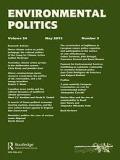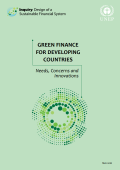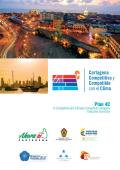
This report is the first OECD review of Colombia’s environmental performance. It evaluates progress towards sustainable development and green growth, with a focus on waste and chemicals management and policies that promote more effective and efficient protection and sustainable use of biodiversity.

The alleged capacity of Payment for Environmental Services (PES) to reach conservation policy goals, while reducing poverty in a cost-effective manner, makes it an extremely attractive development instrument for policymakers and international funding agencies. This article reconstructs the process of envisioning and building the National PES Strategy in Colombia. It reveals how this conservation policy has resulted from the mobilisation of the transnational/national PES epistemic community and its globally expanding discourse. The influential PES network generates internally defined standards of success that proceed without reference to empirical evidence as to the impacts of the implemented policies. PES adoption is influenced by regulatory instruments’ unsatisfactory outcomes, the ways in which market-environmentalist models induce profound indifference towards on-the-ground policy impacts, the discursive power and alignment properties of the PES policy epistemic community, and financial and political pressures by international banks and environmental NGOs.

This white paper provides an analysis of the Intended Nationally Determined Contributions (INDCs) for 37 partner countries in the U.S. Government's Enhancing Capacity for Low Emission Development Strategies (EC-LEDS) program and other designated priority countries. The white paper includes an overview of global INDCs, country profiles for countries, regional trends, and sectoral trends. Moreover, each country profile includes information from the INDC on the:

Green finance is a strategy for financial sector and broader sustainable development that is relevant around the world. But the context differs considerably for different countries. Developing countries, notably those with underdeveloped financial systems, face particular challenges in financing national development priorities.
Broadly, concern and action to align financing to sustainable development is concentrated in three areas:

This report outlines the strategies in place for the World Heritage City of Cartagena, Colombia to become an icon of climate compatible development, where the risk of climate change is converted into an opportunity for development.
The future of Cartagena is uncertain and vulnerable to climate change. Even a 2C increase in temperatures will likely raise sea levels in the area by 60cm by 2040. Further risks of drought, and increased rainfall have motivated action to prevent such events unfolding and hampering the future of its citizens.
The vision of Plan 4C is that by 2040, Cartagena de Indias will be recognised as a city that is a model of urban and coastal planning based on climate compatible development: where adaptation and mitigation measures will reduce indices of vulnerability to climate change, improve efficiency of public investment, the quality of life of its inhabitants and the competitiveness of its sectors.
